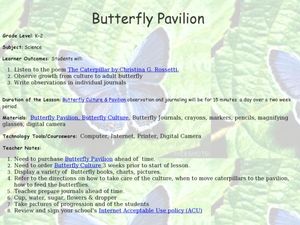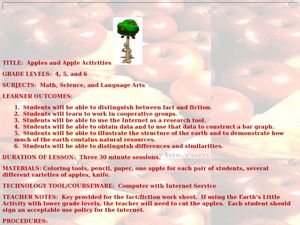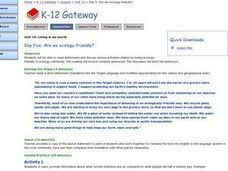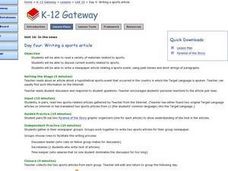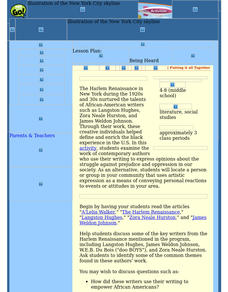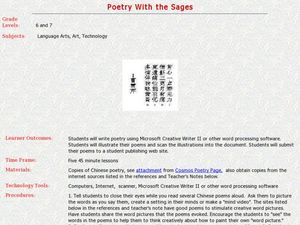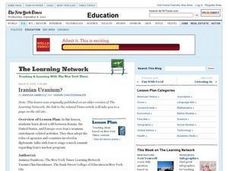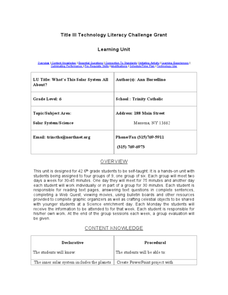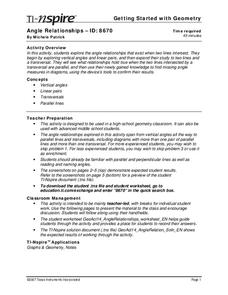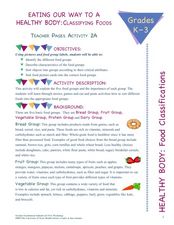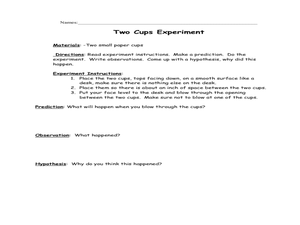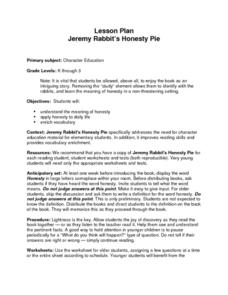Curated OER
Butterfly Pavilion
Students learn about butterflies through books and observation in a butterfly pavilion. For this butterfly pavilion lesson, students use hand lenses to observe the metamorphosis of the butterfly and record in their journals. Students...
Curated OER
Apples and Apple Activities
Learners investigate apples. In this reading comprehension instructional activity, students read a book about apples then compare and contrast, make graphs, distinguish between fact and fiction and work in groups. Learners...
Curated OER
Traditional Remedies
Students discover alternative medicines from around the globe. In this world culture lesson, students read text from Africa, Ireland, Tibet and Tanzania discussing known remedies to diseases. Students discuss with each other...
Curated OER
Are We Ecology-Friendly?
Students explore ecology. For this ecology lesson, students read scenarios, discuss them in groups and decide if they are eco-friendly or not. Students discuss the differences in eco-friendly practices fifty years ago and now. Students...
Curated OER
Day four: Writing a Sports Article
Young scholars write a newspaper article related to a sports event. In this article writing lesson, students read sports-related articles, complete a graphic organizer to help them see the format of a newspaper article, then they...
Curated OER
Balance of Power
Students explore the impact of the Federal Reserve Bank. In this central bank lesson, students read specific selections out of their textbooks about the history of the bank and its role in the U.S economy. Students then select 1 of 7...
PBS
Being Heard
Examine the work of contemporary authors who use their writing to express opinions about the struggle against prejudice and oppression in our society. A short lesson on the Harlem Renaissance introduces learners to the most prominent...
Curated OER
What is a Seed?
First graders identify the parts of a seed. In this plant biology instructional activity, 1st graders are given a seed and identify each part of the seed by using a hand lens. Students plant a seed and graph the growth.
Curated OER
Poetry With the Sages
Students write poems and input them into a word processing program. In this poetry instructional activity, students listen to Chinese poems and draw mental images. Students compose poems and illustrate them. Students share their work.
Curated OER
Iranian Uranium?
Young scholars explore how Iran's uranium enrichment-related activities has caused a rift between Russia, the United States, and Europe. They stage a mock summitt to discuss Iran's nuclear program.
Curated OER
What's This Solar System All About?
Sixth graders complete a unit of lessons on the solar system. In small groups, they participate in a Webquest, watch movies, complete graphic organizers, and answer questions, create a model of the planets, and develop a Powerpoint...
Curated OER
Willie and Friends: Overcomers in the Land Stories by Faith Ringgold
Young scholars use puppets and plays to examine the role of African Americans throughout history. After being read a story by a puppet, they respond to each one in writing. Individually, they write a story about a place they have wanted...
Curated OER
Ethnic Humor
Students define ethnicity and ethnic group in their own words. In groups, they view comic strips and identify how the strips relate to their family life. Individually, they write their own comic strip about their own ethnic group. To...
Curated OER
Angle Relationships
Tenth graders explore the angle relationships that exist when two lines intersect. In this geometry lesson, 10th graders estimate the measure of given angles and use their graphing calculator tools. Students use this knowledge to find...
Curated OER
Eating Our Way to a Healthy Body: Classifying Foods
Students examine the major food groups. In this classifying foods lesson, students discover the 5 food groups as they read books and play games. Students then sort foods into the appropriate food groups
Curated OER
How Old is Old
Students explore the aging process. Students examine the concept of age from a child's perspective and discuss that aging is relative. Students read the book, How Old is Old? and engage in several different activities on age and life spans.
Curated OER
Bird and Breakfast
Students examine winter birds. In this KWL chart lesson, students fill out the chart and view a PowerPoint presentation. Students then complete the chart and discuss winter birds.
Curated OER
ReQuest and Motor Imaging with My Side of the Mountain
Fifth graders read "My Side of the Mountain." They create a pantomime using vocabulary words from the story. Students create three questions about the reading. They discuss the passage they read and act out words to help them better...
Curated OER
Stone Fox Plot Frame
Fifth graders recall the major plot points of a chapter book. After reading the chapter book "Stone Fox," they students describe the plot framework through use of a worksheet. Students are then divided into group to act out selected...
Curated OER
What Is It?
Students explore the likelihood of events. In this logical thinking lesson, 3rd graders are given several scenarios and determine whether the possibility of the described event actually happening is likely, unlikely, or...
Curated OER
Understanding Bernoulli's Principle
Fifth graders explain why we fly. For this space science lesson, 5th graders discuss Bernoulli's prinicple and its relation to flight.
Curated OER
You Can Stop!!
Students analyze smoking behavior based on peer pressure. In this health lesson, students read and complete worksheets on the internet concerning the behaviors associated with smoking. They summarize what they have learned by...
Curated OER
Jeremy Rabbit's Honesty Pie
Students, through the reading of the book: "Jeremy Rabbit's Honesty Pie", study the value of honesty and what it means. This lesson is a fun, interactive way to examine what honesty means and how it should be used in life. Previous to...
Curated OER
Eastern Woodland Indians
Fifth graders research the Eastern Woodland Indians in this lesson. They list the tribes and write a description of the physical environment. They list examples of the types of food, clothing, transportation, home/shelter,...
